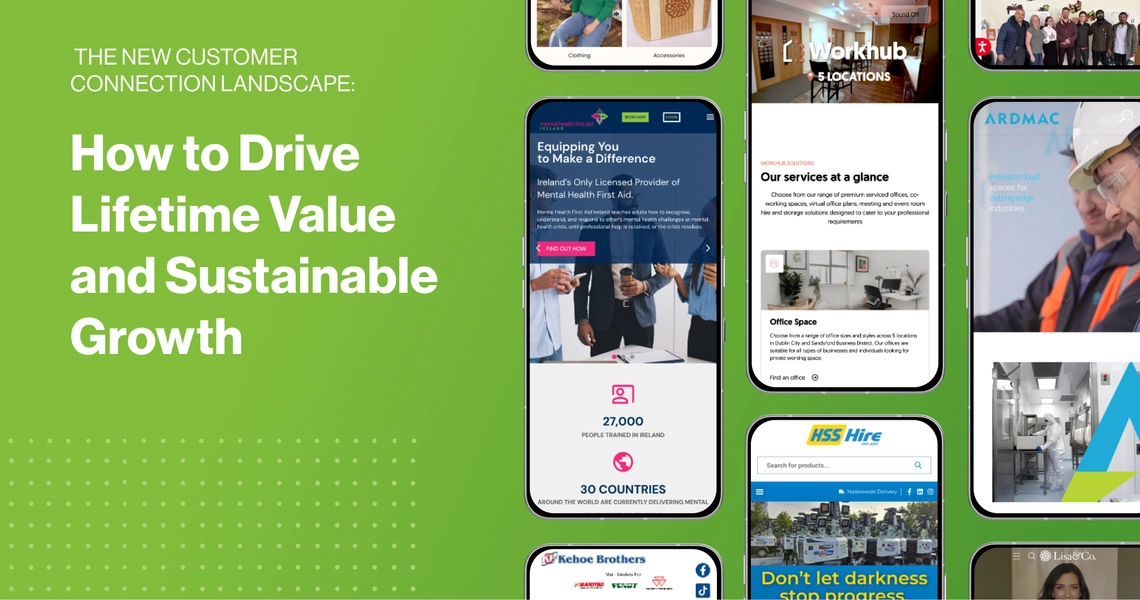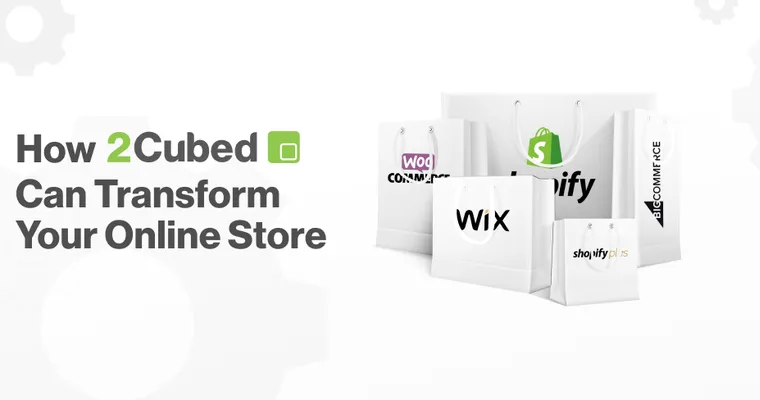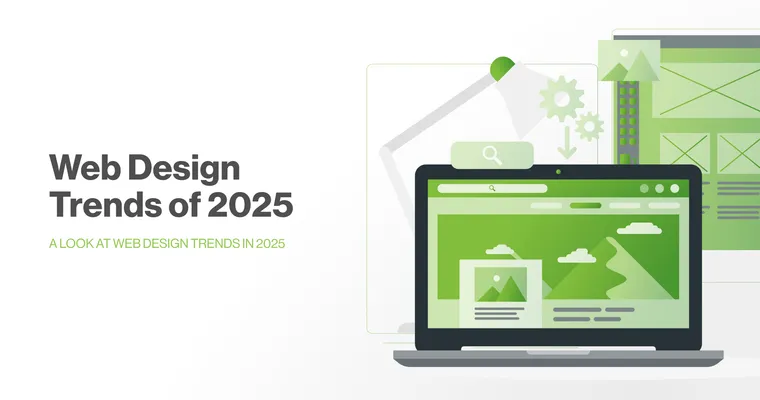Summary:
Discover how to reduce reliance on volatile algorithms and build lasting revenue streams. In this article, 2Cubed explores how AI search, social commerce, first-party data strategies, and smart eCommerce Web Design can help you deepen customer loyalty, maximise lifetime value, and accelerate growth.
Introduction
At 2Cubed, we’ve seen how quickly the digital landscape can shift. From AI-driven search to social commerce and online marketplaces, brands face an ongoing challenge: staying visible and building meaningful customer relationships in an environment that changes almost daily.
That’s where expert Web Design and eCommerce Web Design come into play. A website isn’t just a digital storefront — it’s the hub of your customer connection strategy. Done right, your website becomes the foundation for capturing data, personalising experiences, and nurturing customer loyalty.
In this article, we’ll break down:
- The new customer connection landscape – and what it means for your visibility.
- How to maximise customer lifetime value (CLV) with practical email and SMS strategies.
- Ways to turn first-party data into a growth engine that reduces acquisition costs and increases resilience.
The New Customer Connection Landscape
Search and discovery have shifted dramatically. Customers no longer just “Google it” — they’re exploring products through TikTok, Instagram Shops, Amazon, and increasingly, AI-driven search results. This fragmented landscape means brands can’t afford to put all their eggs in one basket.
What’s changing:
- AI search: Google’s Search Generative Experience and AI-powered engines are pulling answers directly into results, reducing organic click-throughs.
- Social commerce: Platforms like TikTok and Instagram have blurred the line between content and commerce. Product discovery happens instantly.
- Marketplaces: Amazon, eBay, and niche vertical marketplaces dominate, but they own the customer relationship — not you.
Why Web Design matters here:
A strong, conversion-focused website design ensures that no matter where customers discover you, they have a seamless journey once they land on your site. For eCommerce, this means fast-loading product pages, frictionless checkout, and mobile-first experiences that keep buyers engaged.
Maximising Customer Lifetime Value
Acquiring new customers is expensive. Retaining and growing the value of existing customers is where real profitability lies. Email and SMS marketing remain two of the most effective tools for maximising CLV — but their impact is multiplied when paired with smart eCommerce Web Design.
Proven tactics include:
- Automation sequences: Welcome flows, abandoned cart recovery, re-engagement campaigns.
- Personalisation: Tailored recommendations based on browsing, purchase history, and behaviour.
- Segmentation: Sending the right message to the right customer at the right time.
- Value-driven content: Educational tips, how-tos, and updates that build trust beyond the sale.
When your website is designed with CLV in mind — from email capture forms to loyalty programme integrations — you create a full ecosystem where marketing and web design work hand in hand to deepen customer relationships.
Turning First-Party Data into a Growth Engine
With cookies being phased out and privacy regulations tightening, first-party data is more valuable than ever. This is the data you already own — from email lists, purchase history, website analytics, and CRM systems.
Why it matters:
- Boosts paid campaign performance: Feeding platforms like Google Ads or Meta Ads with rich customer data sharpens targeting and reduces wasted spend.
- Lowers acquisition costs: Knowing your audience inside out means you spend less to reach the right people.
- Creates resilience: When algorithms change, your owned data and channels protect your ability to market effectively.
How Web Design supports this:
Good web design ensures you’re not just collecting data but collecting it responsibly and effectively. Integrated sign-up flows, custom account dashboards, and checkout optimisations all make it easier to capture and use customer data — while maintaining compliance.
Conclusion
The businesses that win in 2025 and beyond won’t be those who rely solely on algorithms or paid visibility. They’ll be the ones who take control of their customer relationships, maximise lifetime value through personalised communication, and transform first-party data into a growth engine.
And at the centre of all of this? Web Design and eCommerce Web Design that’s built for growth, loyalty, and long-term success.
At 2Cubed, we specialise in creating websites that don’t just look great — they deliver measurable results through SEO-optimised design, eCommerce functionality, and integrated marketing tools. Ready to future-proof your growth? Get in touch with us today.
FAQs
- Why is customer lifetime value more important than acquisition?
Because it costs significantly more to acquire a new customer than to retain an existing one. Maximising CLV ensures higher profitability and sustainable growth.
- How can eCommerce Web Design improve loyalty?
Smart eCommerce Web Design makes it easier for customers to find, purchase, and re-engage with your brand. Features like personalised product recommendations, account dashboards, and loyalty integrations keep customers coming back.
- What is first-party data and why is it critical now?
First-party data is information you collect directly from customers. With third-party cookies disappearing, this data gives you control and accuracy for targeting and growth.
- How does AI search affect SEO and Web Design?
AI-powered search engines deliver direct answers, reducing clicks to websites. To adapt, your web design should include structured data, optimised content, and mobile-first layouts that increase visibility and engagement.
- How can 2Cubed help with this strategy?
We design and develop SEO-optimised websites, integrate CRM and marketing automation tools, and provide strategies for building long-term customer value.



